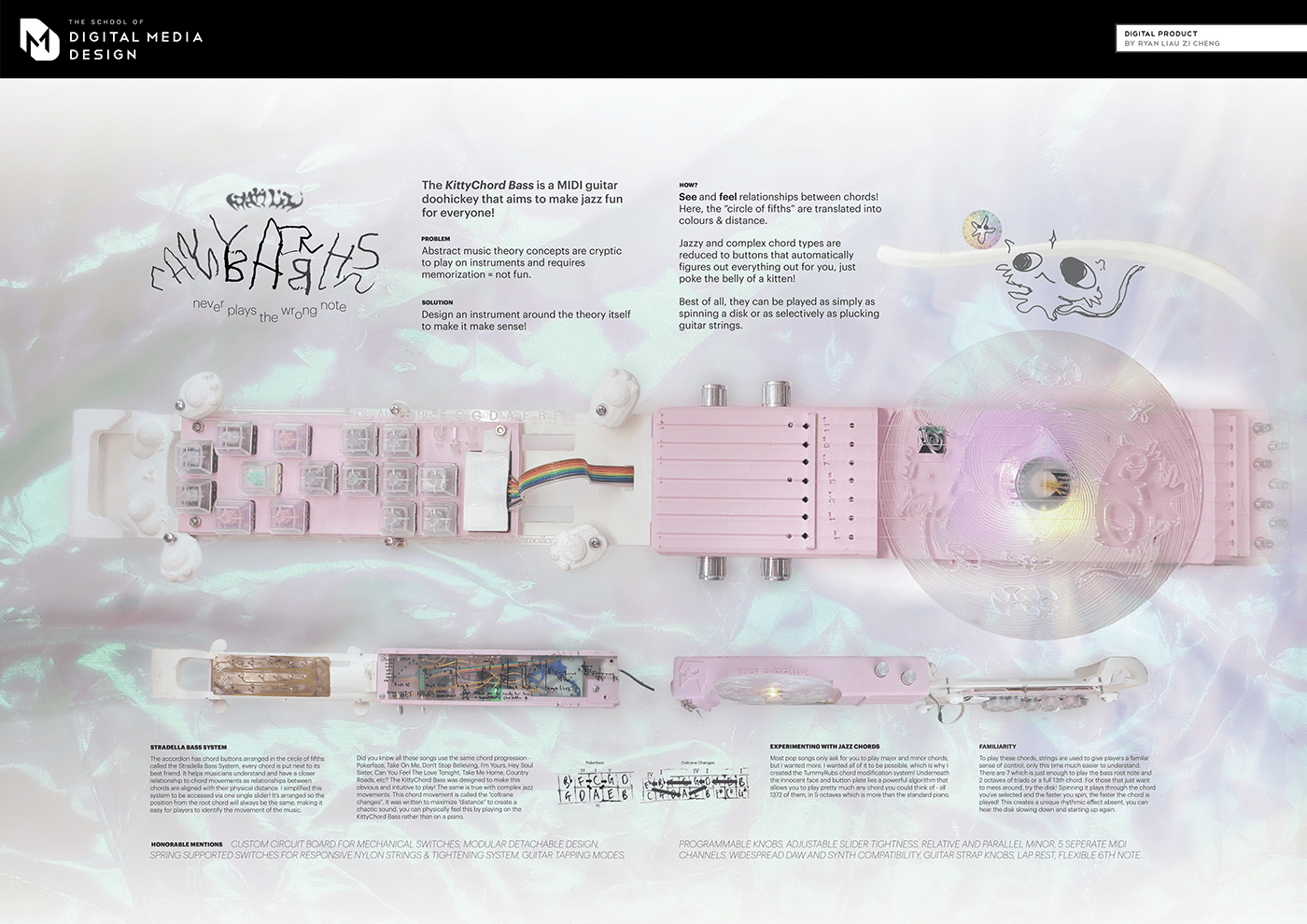
If there's no such thing as a "wrong note" then why do I still suck at music? Memorizing abstract theory? Practicing for hours a day? I thought music was supposed to be fun!
Introducing: the Omni-Kitty Chroma-Chord Candy Bar Bass (or KittyChord Bass for short) - the instrument that loves you back!
SO HERE'S WHY AND HOW IT'S JUST BETTER
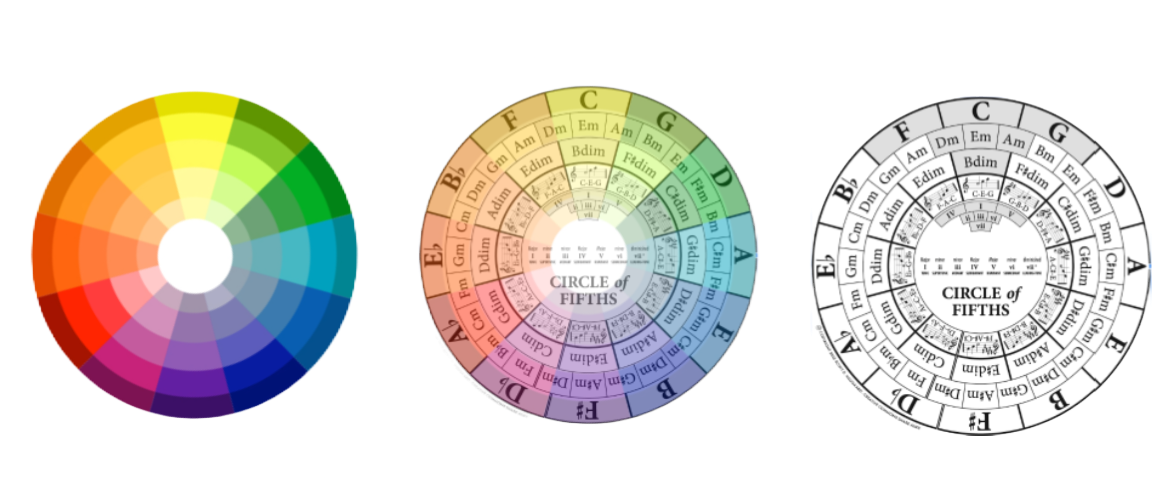
Chord relationships as on the circle of fifths are represented visually using colours; and physically using distance of the slider.


The slider is a simplified accordion stradella bass.
It’s arranged so the position from the root chord will always be the same, making it easy for players to identify the movement of the music (the roman numerals IV, V, ii, vi, iii, etc in pink will always be at the same place relative to the root key I in green, in this diagram the root key is C).

Here are some examples with some popular songs,
all these use the I V vi IV (C G Am F) pattern:
all these use the I V vi IV (C G Am F) pattern:
Lady Gaga - Pokerface & Paparazzi;
A Ha - Take On Me;
Journey - Don't Stop Believing;
Jason Mraz - I'm Yours;
Train - Hey Soul Sister;
Elton John - Can You Feel The Love Tonight;
John Denver - Take Me Home, Country Roads;
The Beatles - Let It Be;
MGMT - Kids,
Toto - Africa,
Rihanna - Love the Way You Lie;
and so on...
If you were to play these songs on a piano or guitar without painstakingly doing roman numeral analysis, you would not have been able to tell that all these songs use the exact same progression, but with the KittyChord Bass just by playing the song you are able to understand the relation between each and every chord played!

A similar understanding can be made with complex jazz songs! This chord movement is called the “coltrane changes”, it was written to maximize distance between key changes to create a chaotic sound. With this stradella based arrangement you can feel (physical distance), see (colour) and hear the distance between the chords.


Even better - with a ridiculous amount of code, I've managed to reduce jazzy and complex chord types to simple buttons that just automatically figure everything out for you, and gamifies it into poking the belly of a kitten.
Underneath the innocent face lies a powerful algorithm that allows you to play pretty much any chord you could think of - all 1372 of them!
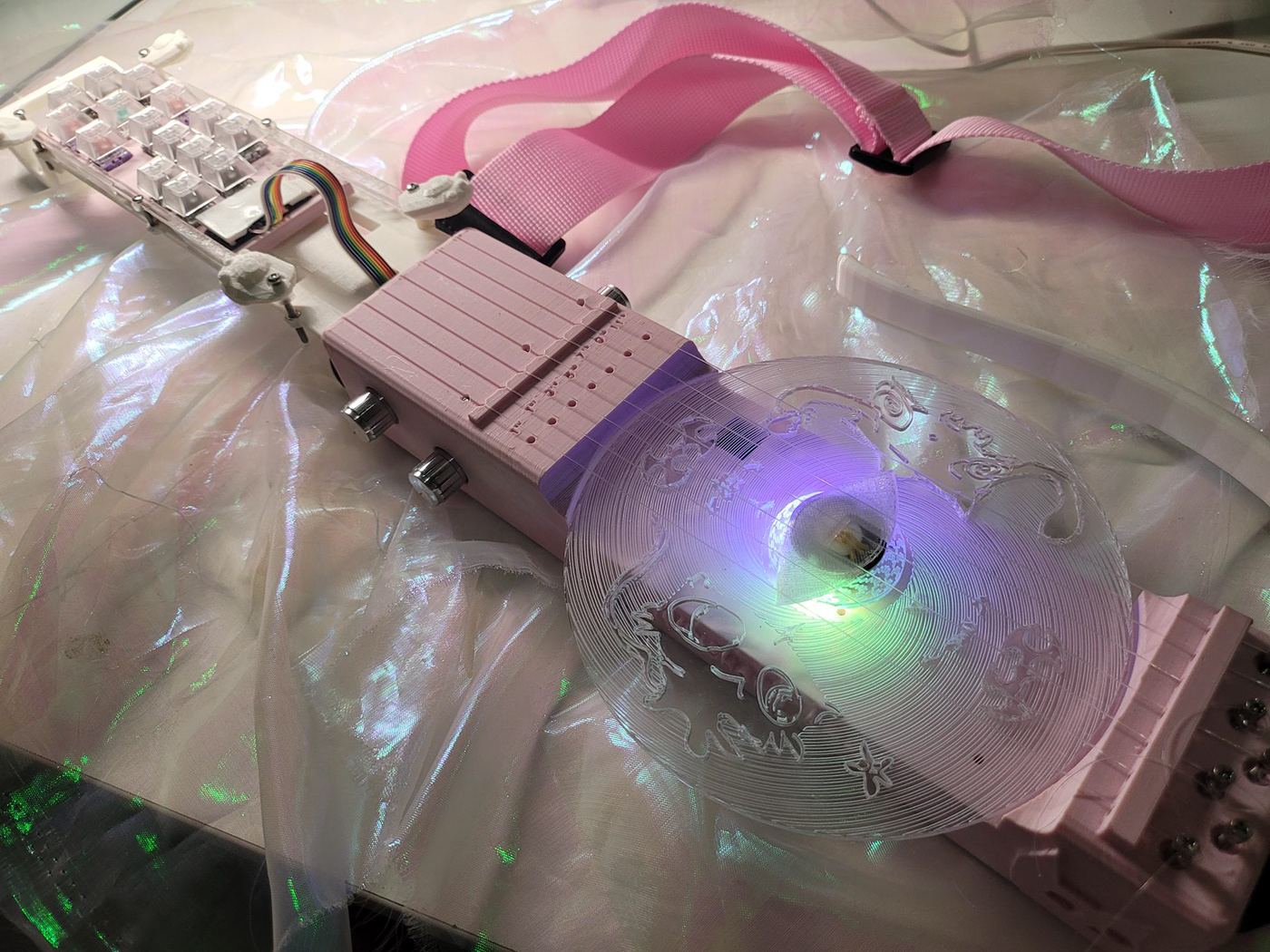
And with the 7 strings, players are handed near infinite flexibility with the way they choose to play those chords! It's just enough to play the bass root note and two octaves of triads or a full 13th chord (you can think of this as the fully spicy chord).
And for new musicians that don't know how to strum: there's a disk with an infrared sensor! Spinning the disk plays through the chord you’ve selected and the faster you spin, the faster the chord is played! This creates a very interesting and unique rhythmic effect, you can hear the disk slowing down and starting up again.


All these playstyles create a powerful synergy that separates the chords and how they are played.
In this example, you can see that the whole intro follows the same pattern 1,357,5,751, over and over, slightly shifting colours each time (which is one step to the left on the circle of fifths, a IVth).
Using traditional sheet music, all of these nuances are much less clear to those without a degree in jazz theory.
AND THEN I MADE IT HAPPEN









1st prototype
Excessively detailed progress journal up to this point:
FP1 pt.1 (concept) - https://docs.google.com/presentation/d/1BB7vBQ-7yNA755McTUaqiGvyUNSVdJrlYtSSZ-kemOw/edit?usp=sharing
FP1 pt.2 (coding) - https://docs.google.com/presentation/d/1-snBQkzmM6Dk2_lqFRRV6oHXLJ_--nPM9-HTjPB1J1w/edit?usp=sharing
FP1 pt.3 (prototyping)- https://docs.google.com/presentation/d/1DmQGIMTrfOHVFBwGQ2wAWQKMjx3hxDHETSz8RWIcdd8/edit?usp=sharing
FP2 (fabrication & design)- https://docs.google.com/presentation/d/19Cl7C8bOs5AKpWdHwIE9D3BHwm4F9FPxvs9KN9yV7Zc/edit?usp=sharing
Because I made prototype 2 (shown below) outside the school syllabus, a journal for the making of it was not made
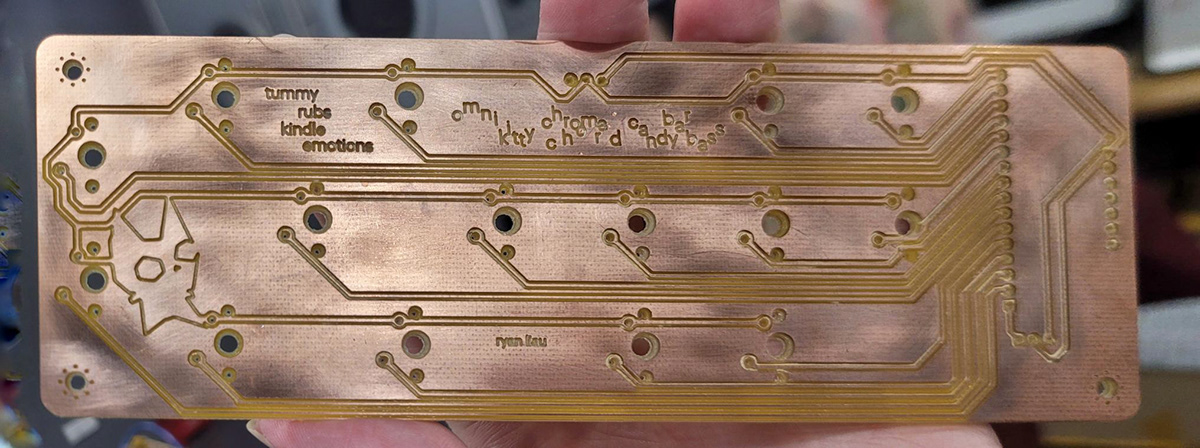
Custom copper plate circuit board for mechanical switches.
One was also made for the switches for the strings.
Previously, the circuit boards were hand soldered - they were very unreliable, prone to breaking and took a long time to fix, so I decided to figure it out on my own time.
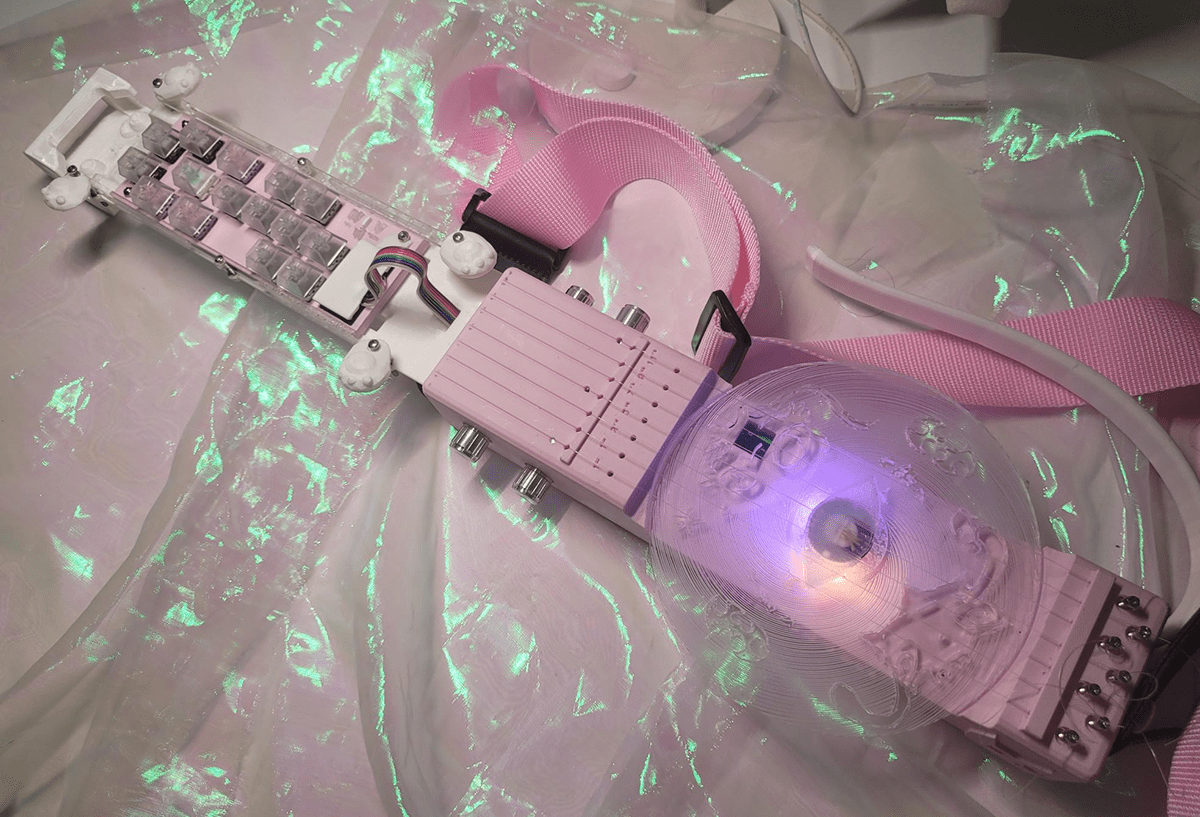

Prototype 2 was constructed much more mindfully with spring supports to make strings more responsive and a detachable modular design so everything is easily replaced or upgraded if I need to.


